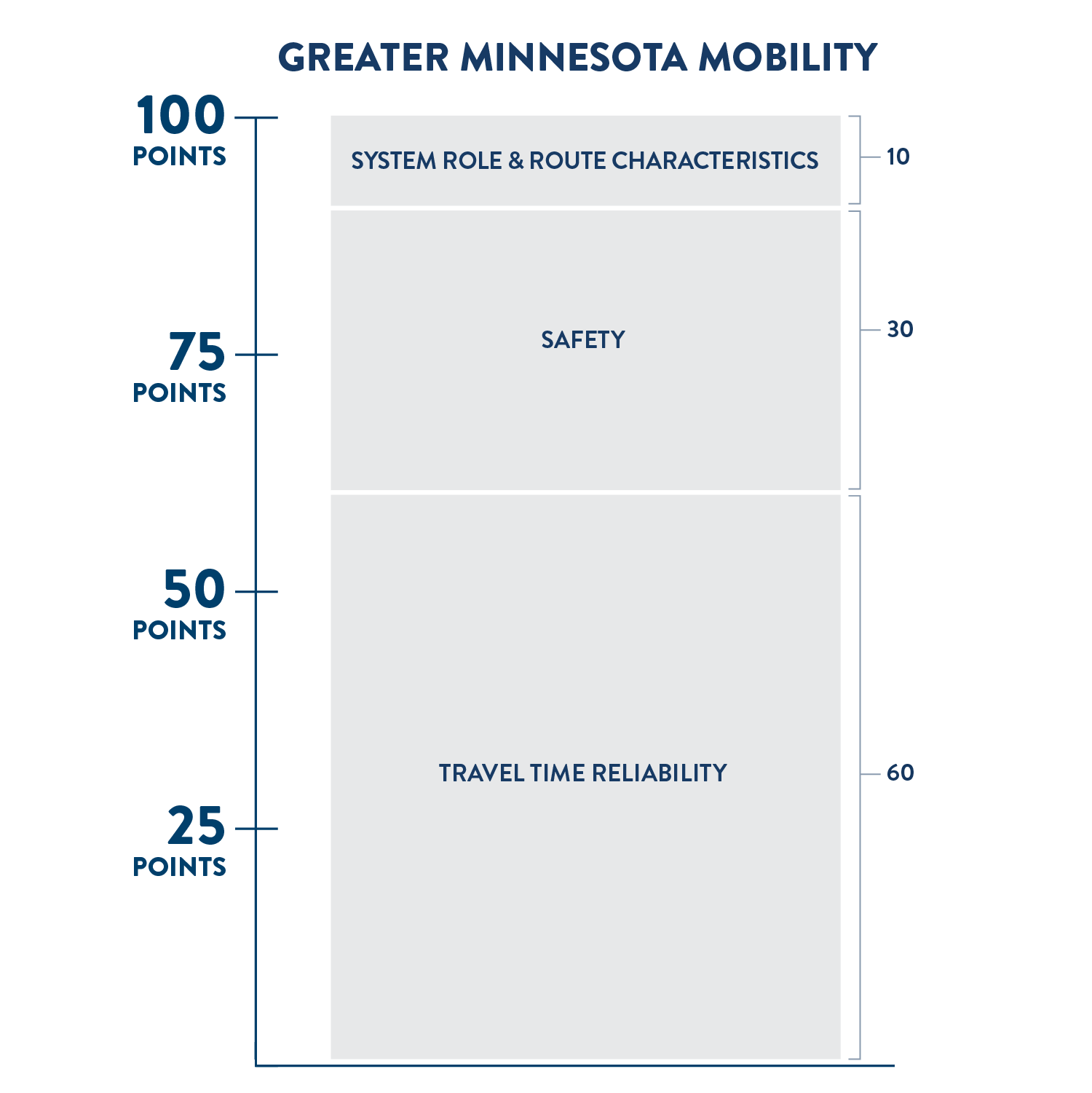Greater Minnesota Mobility
MnDOT District 3

MnDOT evaluates options to improve the safety, efficiency and functionality of the transportation system as part of every project. When developing pavement and bridge projects, MnDOT looks for opportunities to make targeted improvements that address traffic flow and travel time reliability, the movement of freight, or connections for people walking, rolling or biking.
Most significant capacity expansion and mobility projects (for example, converting a signalized intersection into an interchange or adding lanes to a freeway) are now selected through competitive programs like the Corridors of Commerce Program and the Transportation Economic Development Program. However, the Minnesota State Highway Investment Plan does allocate some funding to improve mobility on the National Highway System in Greater Minnesota. Funding for mobility investments in Greater Minnesota is distributed among MnDOT’s districts by formula based on the share of vehicle miles travelled in Greater Minnesota.
Potential projects to reduce travel times and improve travel time reliability and safety on the state highway system in Greater Minnesota are based on the Greater Minnesota Mobility Study.
Each district first evaluates opportunities identified in the Greater Minnesota Mobility Study that can be addressed as part of planned pavement and bridge projects. If they have additional mobility funds, districts may also select standalone projects.
Once selected, MnDOT then identifies and evaluates alternatives and other needs, legal requirements, issues and opportunities in coordination with local partners, and considers public input. Projects may move years based on local coordination, project delivery, timing of other nearby construction projects, and funding shifts.
What was selected
Related links
- District 3 project selection
- Corridors of Commerce program
- Minnesota Highway Freight Program
- Transportation Economic Development Program
How the projects scored
The district did not select any standalone projects in this category this year. The locations that were evaluated in this district are listed in the Greater Minnesota Mobility Study.
